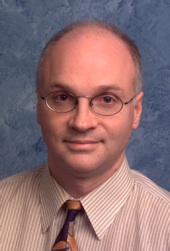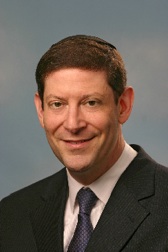Sunday, December 6, 2009
From Einstein’s Photon to Wheeler’s Delayed Choice Experiment: Wave-Particle Duality Brought to Light
Alain Aspect, Ph.D., Laboratoire Charles Fabry de l’Institut d’Optique, Palaiseau, France


Sunday, December 6, 2009
From Einstein’s Photon to Wheeler’s Delayed Choice Experiment: Wave-Particle Duality Brought to Light
Alain Aspect, Ph.D., Laboratoire Charles Fabry de l’Institut d’Optique, Palaiseau, France
The Boris P. Stoicheff Lectures
Optical technology is traced from its ancient roots and earliest known applications through to present-day examples. Key principles of light are demonstrated, with speculations on future advances in Optical technologies that could improve our lives.
In 2006, the RCI became a co-sponsor, with the U of T’s Institute for Optical Sciences, of the Boris P. Stoicheff lectures, given in honour of the renowned U of T physicist, who died in April 2010.
Sunday, December 2, 2007
Optics from 3000 B.C. to 3000 A.D.: the Amazing History and Exciting Future of Optical Science and Technology
Wayne H. Knox, Ph.D., Director and Professor, Institute of Optics, University of Rochester, U.S.A.





Sunday, December 10, 2006
A Little Light Relief: The Science of Photo Medicine
David Phillips, B.Sc., Ph.D., Hofmann Professor of Chemistry and Senior Dean, Imperial College, London, England
Light, particularly sunlight, has always occupied a mystical power over all civilizations and is commonly held to bestow good health upon recipients of its rays. T hat there is both truth and fallacy in such beliefs will be demonstrated in this lecture, which deals with the science of photo-medicine. The subject encompasses effects of light on the skin, diagnostic uses of light, and therapeutic aspects. We will concentrate on the latter, but not before a brief consideration of harmful effects of solar radiation. Therapeutic uses include treatment of skin complaints such as psoriasis, treatment of neonatal jaundice, and photo-inactivation of viral, bacterial and fungal infections. The laser has revolutionized some aspects of medicine, and laser applications discussed will include surgery using infrared and ultraviolet lasers and the use of lasers plus chemical sensitizers to destroy tumours selectively (photodynamic therapy). The topic is illustrated with many demonstrations, and gives an overview of the subject from the point of view of a chemist.


Sunday, December 14, 2008
Optical Communications: Innovations (and their Needs) Abound
Alan Willner, Ph.D., Ming Hseh Department of Electrical Engineering, University of Southern California
Optical fibre communjcations have been a key enabler of the fantastic growth in nearly all forms of global communications. One tiny glass fibre can accommodate more than 20,000 Gbits per second of information traffic, the equivalent of many millions of simultaneous phone calls or a million simultaneous high-speed internet connections. Increasing demand for capacity by different types of users has driven significant innovation. Recent technical achievements in advanced data-modulation formats, high-performance integrated optics, and work to overcome non-idealities on the optical fibre itself promise a robust, reconfigurable system with greater capacity and flexibility.




Is light a wave or a particle? After many centuries of debate, involving giants such as Newton, Huyghens, Young, Fresnel, Maxwell, and Einstein, the final answer of quantum mechanics is: both!
Wave-particle duality is at the root of the quantum revolution initiated at the beginning of the 20th century, but explaining it is a difficult challenge. Most textbooks on quantum physics start with a description of an “experiment” to demonstrate it -- an experiment that was not actually realized with photons before 1985. An even more fascinating version of that “thought experiment” – the “delayed-choice experiment” proposed by J.A. Wheeler - has recently been turned into a real experiment as well. We will present that experiment, which, in the words of Richard Feynman, stresses one of the big "quantum mysteries."


